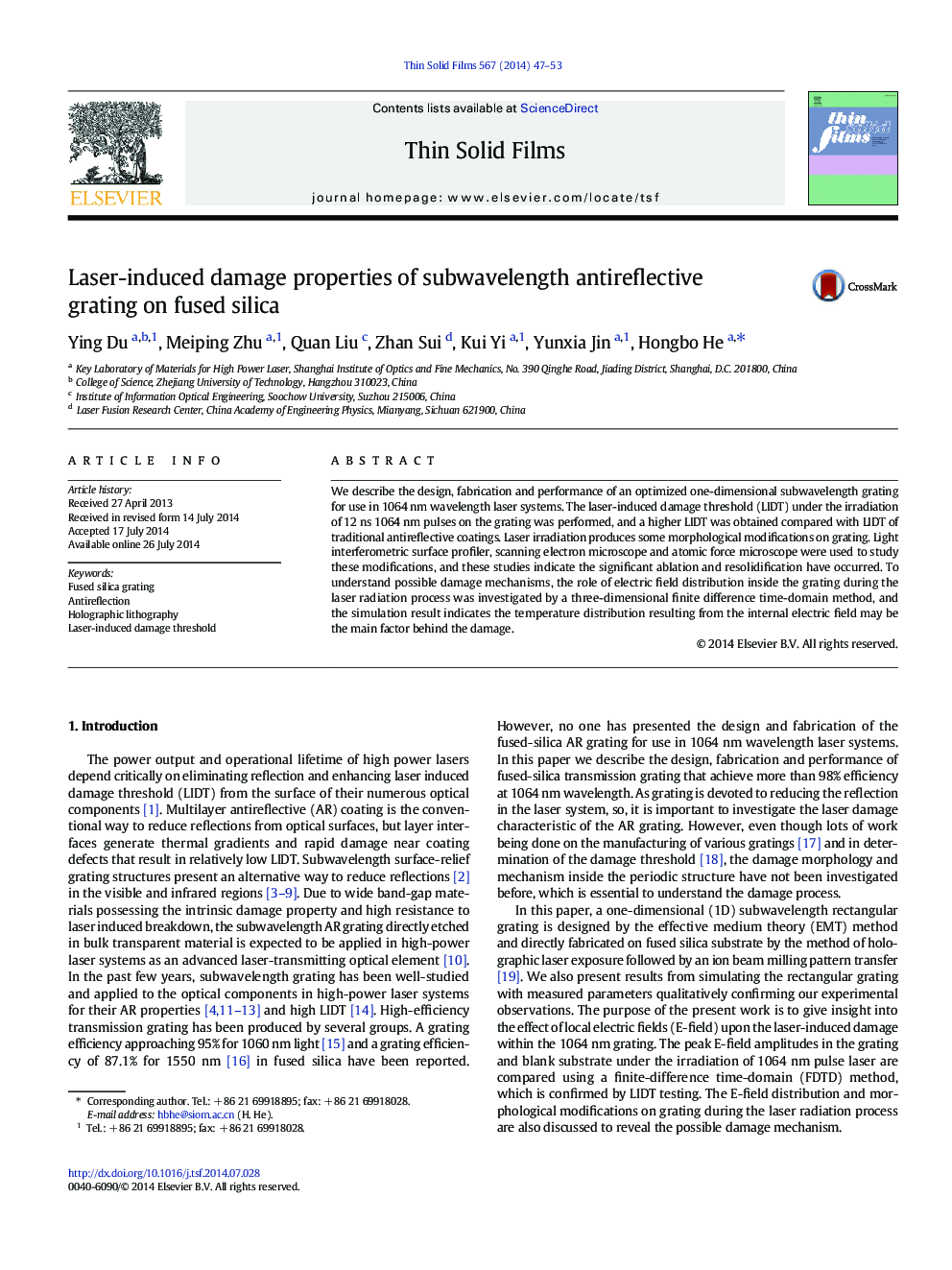| Article ID | Journal | Published Year | Pages | File Type |
|---|---|---|---|---|
| 1665323 | Thin Solid Films | 2014 | 7 Pages |
•Antireflective (AR) gratings are designed and manufactured on fused silica.•Simulated transmittance and experimental results show a similar tendency.•Higher laser-induced damage threshold obtained compared to mutilayer AR coatings.•The damage mechanisms are analyzed by simulating electric field distribution.
We describe the design, fabrication and performance of an optimized one-dimensional subwavelength grating for use in 1064 nm wavelength laser systems. The laser-induced damage threshold (LIDT) under the irradiation of 12 ns 1064 nm pulses on the grating was performed, and a higher LIDT was obtained compared with LIDT of traditional antireflective coatings. Laser irradiation produces some morphological modifications on grating. Light interferometric surface profiler, scanning electron microscope and atomic force microscope were used to study these modifications, and these studies indicate the significant ablation and resolidification have occurred. To understand possible damage mechanisms, the role of electric field distribution inside the grating during the laser radiation process was investigated by a three-dimensional finite difference time-domain method, and the simulation result indicates the temperature distribution resulting from the internal electric field may be the main factor behind the damage.
